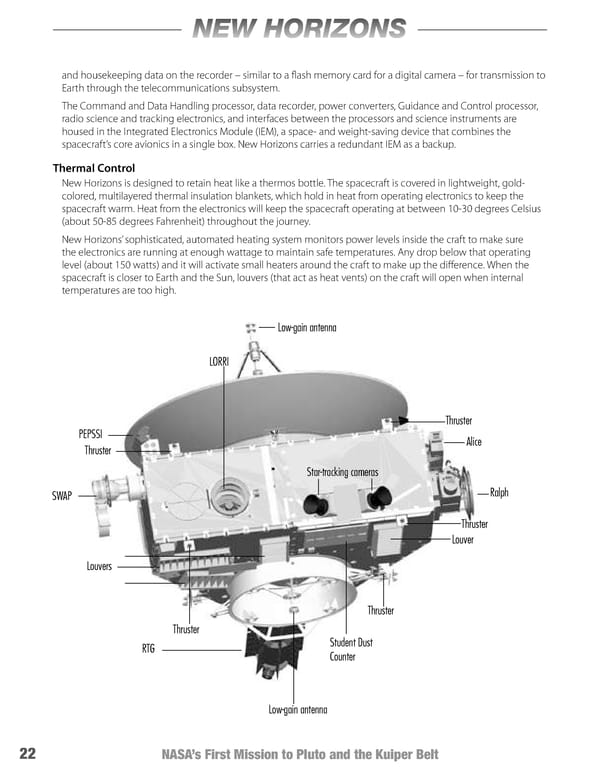NEW HORIZONS and housekeeping data on the recorder – similar to a flash memory card for a digital camera – for transmission to Earth through the telecommunications subsystem. The Command and Data Handling processor, data recorder, power converters, Guidance and Control processor, radio science and tracking electronics, and interfaces between the processors and science instruments are housed in the Integrated Electronics Module (IEM), a space- and weight-saving device that combines the spacecraft’s core avionics in a single box. New Horizons carries a redundant IEM as a backup. Thermal Control New Horizons is designed to retain heat like a thermos bottle. The spacecraft is covered in lightweight, gold- colored, multilayered thermal insulation blankets, which hold in heat from operating electronics to keep the spacecraft warm. Heat from the electronics will keep the spacecraft operating at between 10-30 degrees Celsius (about 50-85 degrees Fahrenheit) throughout the journey. New Horizons’ sophisticated, automated heating system monitors power levels inside the craft to make sure the electronics are running at enough wattage to maintain safe temperatures. Any drop below that operating level (about 150 watts) and it will activate small heaters around the craft to make up the difference. When the spacecraft is closer to Earth and the Sun, louvers (that act as heat vents) on the craft will open when internal temperatures are too high. Low-gain antenna LORRI Thruster PEPSSI Alice Thruster Star-tracking cameras SWAP Ralph Thruster Louver Louvers Thruster Thruster RTG Student Dust Counter Low-gain antenna 22 NASA’s First Mission to Pluto and the Kuiper Belt
 New Horizons Page 30 Page 32
New Horizons Page 30 Page 32